Rosebud: Homes in The Sims
By gamer_152 0 Comments
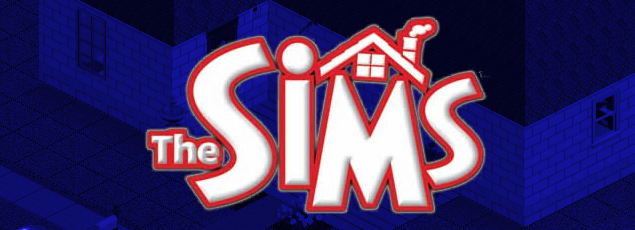
When we last looked at The Sims, I talked about the stats that make up a character, how different spheres of characters' lives interact, and how sims communicate with each other. However, the game's systemic interactions don't just happen within and between sims, but also between sims and their homes. To understand The Sims in its entirely, we need to plumb the depths of the Buy and Build Modes, as the options available to us in the Live Mode are only there because of the actions we've taken in these other modes, and vice versa.
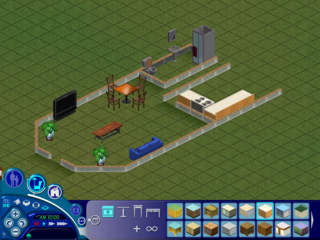
Before we get started, we should remember that not every person who played The Sims played a Sims that existed outside of the Build and Buy tabs. A lot of players, many of them the kind of people who don't typically play video games, spent their time in Maxis's life sim exclusively constructing and furnishing houses. The management of morning routines and the preparation for big promotions that we might associate with The Sims are alien to them. While The Sims may be one game, there are two experiences within it: the slice-of-life simulator and the model home builder, and I suspect this versatility was part of the appeal of The Sims to those outside the traditional gaming audience.
To the extent that we can separate its modes from each other, one of the thickest divides in The Sims is the soundtrack. Music in video games often changes to match the tone of either the current setting or current point in the narrative. You might expect to hear a lot of bongos in a jungle level or a gothic organ fugue when approaching a final boss. But in the base Sims there are no explicit changes of setting or narrative: your sims are consigned to their households, and without a script, it's somewhat ambiguous what "happy" or "sad" patches of the game would consist of, yet Maxis has an ace up their sleeve. Matching music to setting and mood is a technique that games took from films, but The Sims imagines a use of music which could only exist in games because it's more systemically-grounded. Its music changes not to match places or feelings in the story but to match the way in which you are operating on its world.
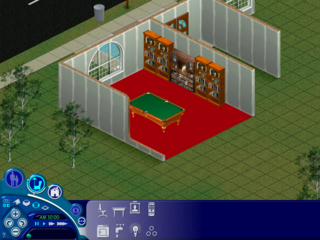
Build Mode uses a serene, dignified piano as a backdrop to its architecting and landscaping, Buy Mode has this cheesy informercial sound for the compulsive shopper, and Live Mode has no music at all. The choice to go without a soundtrack for a sizeable portion of this game might seem like a missed opportunity to inform its themes, or may seem like a tonal choice that would make it feel hollow and lonely. However, to say there is not an OST to the Live Mode does not mean there is not a soundscape to it. The sound of the Live Mode is the sound of your house, so what you hear in The Sims is a direct expression of the choices you've made in the gameplay. Maybe you have a bookworm who lives alone, and their house is always quiet, perhaps you have a couple that loves music and leave the radio on, or you could have a busy family who fill the house with their cacophony. Much of the noise of the Live Mode is your characters making themselves heard, and the Simlish "language" that the game runs on is a smart way for the developers to emulate conversations when they only have so many audio clips of people talking. By choosing not to affix the sims' speech to a real language, they somewhat mask the fact that The Sims are saying the same thing every three conversations or so.
Exploring the sound design takes us some way to understanding how Maxis distinguish each of the modes from each other, but how do they bring them together? If SimCity, Will Wright's previous work, was about the player planning out human living environments on a macro-scale, then The Sims is about the same thing on a micro-scale. A cornerstone of SimCity was the restriction that you could never direct the behaviour of your citizens. You could have them live prosperous, healthy lives but only by creating the conditions in which people could live such lives, emphasising environment and design rather than the decisions of community members. The most famous influence on the game was Jay Wright Forrester's 1969 book Urban Dynamics, and The Sims was inspired by its own book on urban planning and architecture: A Pattern Language by Chris Alexander et al. In a 2008 interview, Wright said of Alexander:
"Chris Alexander I find particularly interesting because he was writing about architecture, but not in terms of form – a lot of architecture is totally stuck on the artistry of the form, what the form of the building conveys emotionally and all that, and in some senses I think that architecture has run off the beaten track [in focusing on form] when really what their job is [is] to design spaces for human interaction. And Christopher Alexander approached the whole thing much more like an anthropologist [...] the Sims really started out as an architectural game – you were designing a house and then the people were the scoring system. They came in and you were looking at how happy they were and how efficiently your house met their needs".
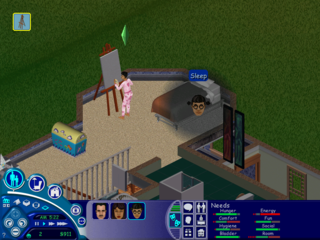
The final cut of The Sims isn't only about how people relate to their homes. It's also about how they relate to their work, other people, and themselves, but almost every time you train a sim's skills or tend to one of their moods, you do so via their environment. It's popular to divide the world into unfeeling and material concepts and human and more abstract concepts, and to believe that having an investment in inanimate objects is shallow, but The Sims sees inanimate objects as intrinsically tied to human needs and emotions. You can't start thinking about taking care of a person in the game without thinking about the material items you'll require to do so, and in that way, those material items seem very human. This is also why we cannot think of the Live, Buy, and Build modes as separate entities and must conceive of them as a whole. The houses you create in the Build Mode are a container for the objects you purchase in the Buy Mode and those objects influence your sims' moods in the Live Mode. Conversely, in the Live Mode, you are stockpiling more money to spend in the Buy and Build modes.
The Sims doesn't see human behaviour as entirely determined by the architecture or urban planning around us in the way that simulators like SimCity do. Unlike SimCity, The Sims lets us directly control citizens' behaviour, so it says, more accurately, that you can lead a citizen to water but it's their choice if, how, and when they drink. Still, there is no drinking without the water, and through the appliances, fixtures, and furniture of homes, The Sims demonstrates the strong influence of residences on the people living inside them. In this way, it is comparable to its father, SimCity, and to the function-focused architecture that A Pattern Language prescribes. If you want to think of The Sims's systems as a commentary on the home, then it's commenting that you are not making wholly independent choices in your day-to-day life. Your choices and how well they serve you have a lot to do with the construction and contents of your home. The architecture of and products in your house are also the result of your employment status, connections, and skills. But by leaning so hard into these environmentally-deterministic messages, The Sims puts an irrational amount of faith in consumerism.

The game operates on a shopping channel logic where the amount you spend on a product correlates to how much better it will make your life. In The Sims, there is no such thing as job satisfaction or heightened elation from living healthy. Even having your sim build a family they love won't do all that much to move the needle on their mood. Instead, there is one way to be consistently happier in life, and it's by buying that hot tub, that trash compactor, that gas range, and that real-wood fireplace. The game goes into materialist overdrive, suggesting not just that human emotions are affected by material goods, but that emotional state is almost solely determined by the price and quality of the products a person uses in their day-to-day life. In case there was any doubt, psychological studies do not corroborate this idea.
This is what happens when you apply classic video game design principles to a game about households and their planning. Traditionally, developers reward your success in a game with an improvement in your abilities to perform the tasks central to the game, and that improvement commonly appears in the form of superior items. A racing game might reward you for winning a race with a faster car to better compete in future races, or an RPG might reward you for winning a battle with a sharper sword that will let you better compete in future battles. On the same train of logic, The Sims awards you for maintaining your sims as people with the capacity to buy objects which will make them happier faster. But when you apply this reward model to The Sims, it has a very different implication than when you apply it to racing game or an RPG. You can objectively prove that higher-end cars and better-forged swords make people more likely to succeed at racing and fighting respectively, but you can't say that getting a bear skin rug or a high-tech microwave makes people objectively happier. Even if racing games and fantasy RPGs were misleading in the way their rewards empower their audience, they would be unlikely to give us any misconceptions that might affect our everyday lives. The same is not true of a game that is curling its reward model around the role of material goods in peoples' homes.
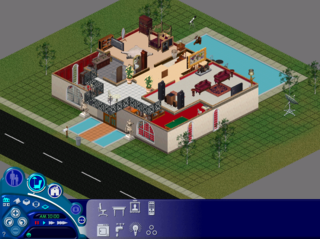
Now, there is some nuance here. In general, buying a lot of luxury products doesn't make human beings happier, but you can argue that there is art, technology, and furniture that people can still get excited about because it appeals to their specific interests. We all have hobbies and art styles we're particularly enthused about, and maybe luxury items that cater to these interests make us happy in ways that other products can't, but here we broach another issue in The Sims: No sim has any taste respective to objects. That is not to say that they don't have personal interests; each sim has a stat screen which tells you which topics they're fascinated by and these are the topics they bring up in conversation. You'll also find that if they're watching TV, the stations they prefer depend on their personality. But the more product-focused areas of play don't follow these rules. The amount a painting bumps up a Room score or a toy increases Fun does not change from sim to sim. This means that there's less you can do to define your sim as an individual than you might think and that the game portrays advertisement as unfalteringly truthful in a way that is unhealthy and unrealistic. The Sims takes place in a parallel dimension where every time you see a listing in a catalogue for a walnut wardrobe or a chrome sink and the product description informs you that it will change your life, it's right.
Having characters in your video game primarily perform tasks via objects in your environment helps teach players about the kind of tools that are important to those characters. It also helps bring a setting to life by depicting it not just through sights and sounds, but also systems. In the case of The Sims 1 specifically, it makes the statement that your mood, lifestyle, and home are inseparable from each other. However, the game also serves as a cautionary tale that making characters in games too reliant on material items makes those characters and games materialist. The Sims 1 encourages us to reflect on how our homes shape us but leaves little room for how other facets of our lives do. Thanks for reading.